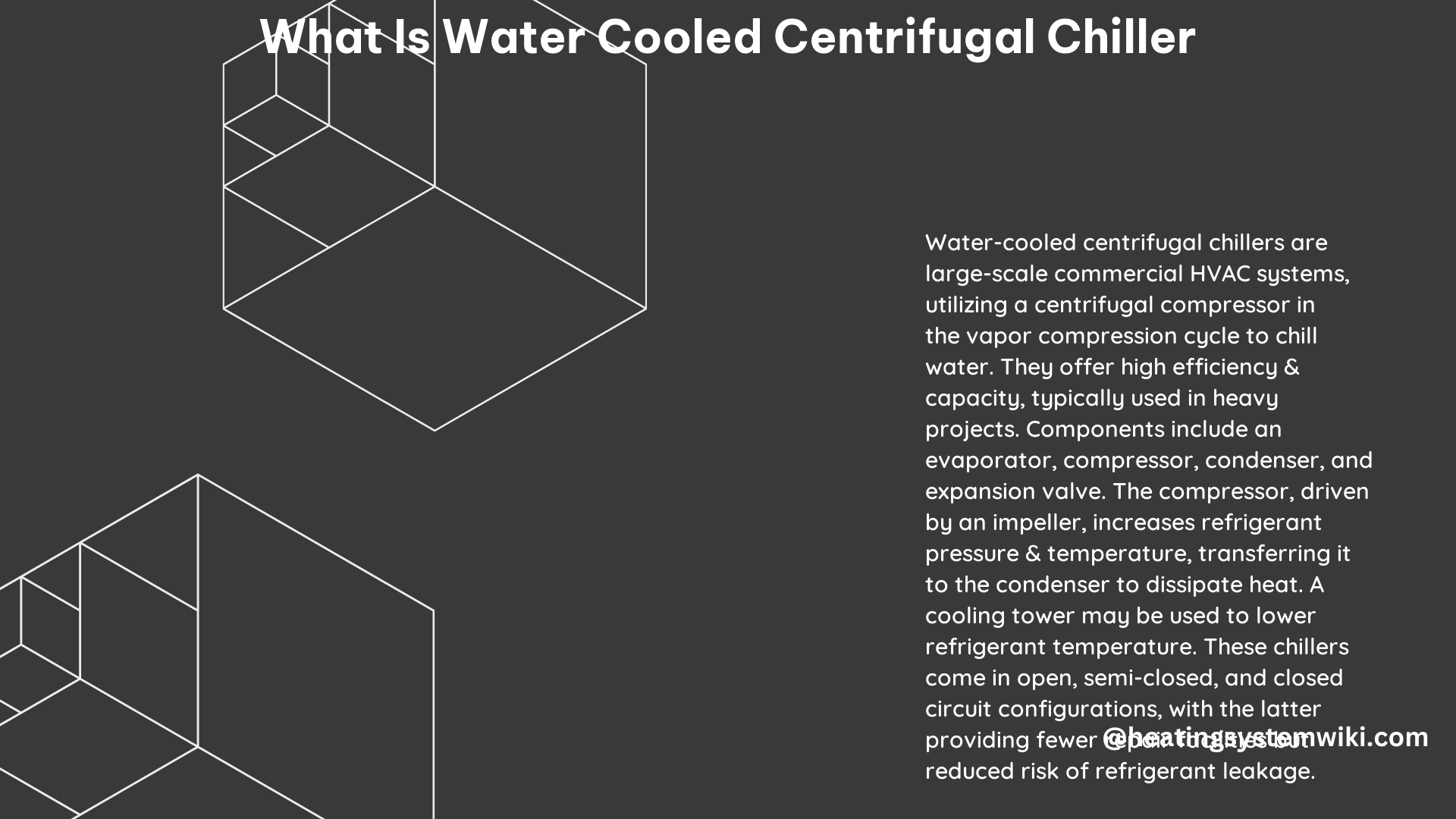A water-cooled centrifugal chiller is a highly efficient air-conditioning system device that uses the principles of thermodynamics to dissipate heat and maintain temperature balance. The key feature of this chiller is its centrifugal compressor, which employs an impeller or propeller to circulate the refrigerant gas and create the necessary pressure for compression.
Understanding the Components of a Water-Cooled Centrifugal Chiller
The water-cooled centrifugal chiller system consists of four primary components:
- Evaporator: This heat exchanger removes heat from the building’s chilled water, lowering its temperature in the process.
- Compressor: The centrifugal compressor increases the pressure and temperature of the refrigerant by converting kinetic energy into pressure.
- Condenser: This heat exchanger removes heat from the refrigerant, causing it to condense from a gas to a liquid.
- Expansion Valve: This component reduces the pressure of the refrigerant, allowing it to evaporate and absorb heat in the evaporator once again.
Applications and Capacity of Water-Cooled Centrifugal Chillers

Water-cooled centrifugal chillers are commonly used in large-scale commercial applications, such as malls, office buildings, factories, and hospitals. They are designed to provide cooling, heating, and heat recovery operations. The cooling capacity of these chillers can range from 350kW to 2200kW, depending on the specific model.
Advantages of Water-Cooled Centrifugal Chillers
One of the primary advantages of water-cooled centrifugal chillers is their high capacity and efficiency, making them suitable for heavy and large projects. However, they do require a cooling tower to reject excess heat to the atmosphere, which adds to their complexity and maintenance requirements.
Technical Specifications and Performance Indicators
Water-cooled centrifugal chillers have several key performance indicators that are important to understand:
- Power Factor: The ratio of actual power (kW) to apparent power (kVA).
- Coefficient of Performance (COP): The ratio of the heat removed by the chiller to the energy consumed by the chiller.
- COP(1) for a water-cooled centrifugal chiller with in/out cooled water 12/7°C and in/out cooling water 30/35°C is 3.5.
- COP(2) for the same chiller with in/out cooled water 12/7°C and in/out cooling water 32/37°C is 3.3.
- Energy Efficiency Ratio (EER): The ratio of the cooling capacity of the chiller to the power input.
DIY Maintenance and Optimization Tips
While building a water-cooled centrifugal chiller from scratch is not recommended due to its complexity, there are several DIY steps you can take to maintain and optimize the performance of an existing chiller:
- Regular Maintenance:
- Check refrigerant levels, oil levels, and filter conditions.
- Clean the condenser and evaporator coils to remove any dirt or debris.
- Optimize the Cooling Tower:
- Ensure the tower is properly sized and maintained for efficient heat rejection.
- Clean the tower fill and strainers regularly to remove any debris.
- Monitor System Performance:
- Check the power consumption, cooling capacity, and COP to identify any issues or inefficiencies.
- Implement Energy-Saving Measures:
- Use variable frequency drives to control compressor and pump motor speeds.
- Utilize free cooling when outdoor temperatures are low enough.
- Upgrade the System:
- Consider upgrading to a more efficient model if the existing chiller is outdated or inefficient.
- Newer models may have higher COPs and EERs, leading to significant energy savings.
By following these DIY tips, you can help ensure that your water-cooled centrifugal chiller is operating efficiently and effectively, while also reducing energy consumption and maintenance costs.
References:
– Centrifugal Chiller – Fundamentals – Energy-Models.com
– Centrifugal Water Cooled Chiller and Heat Pump, 350kW-2200kW – Ruidong HVAC
– Centrifugal Chiller Design | NewYork Engineers
– What is a centrifugal or centrifugal chiller? | Sarmasazan Co.
